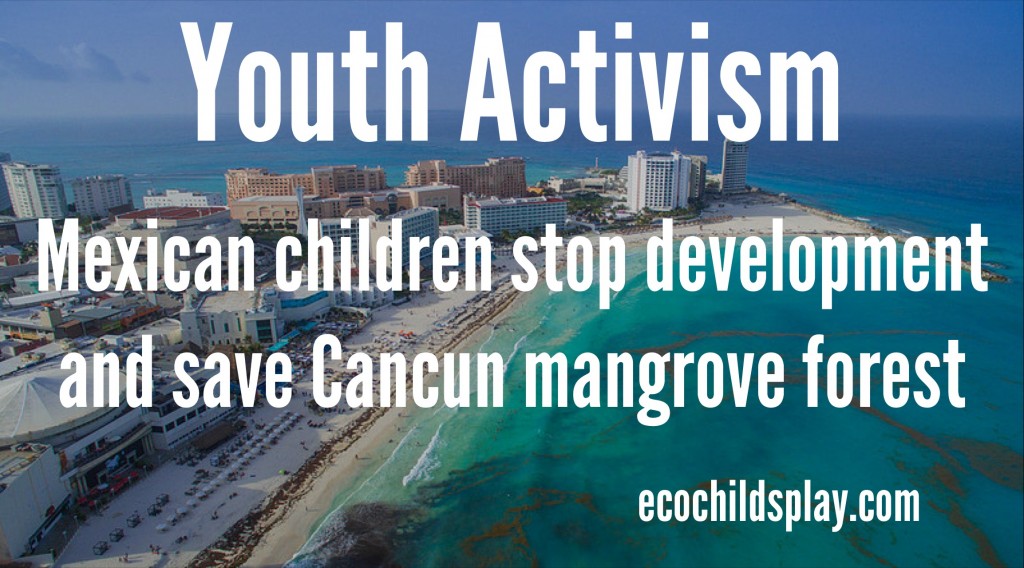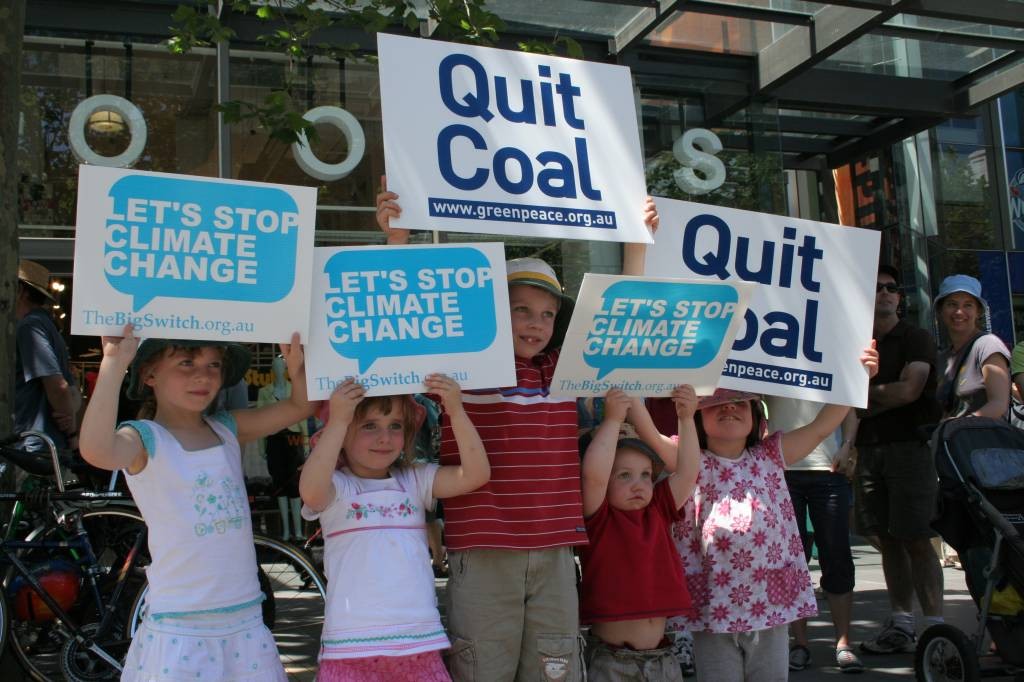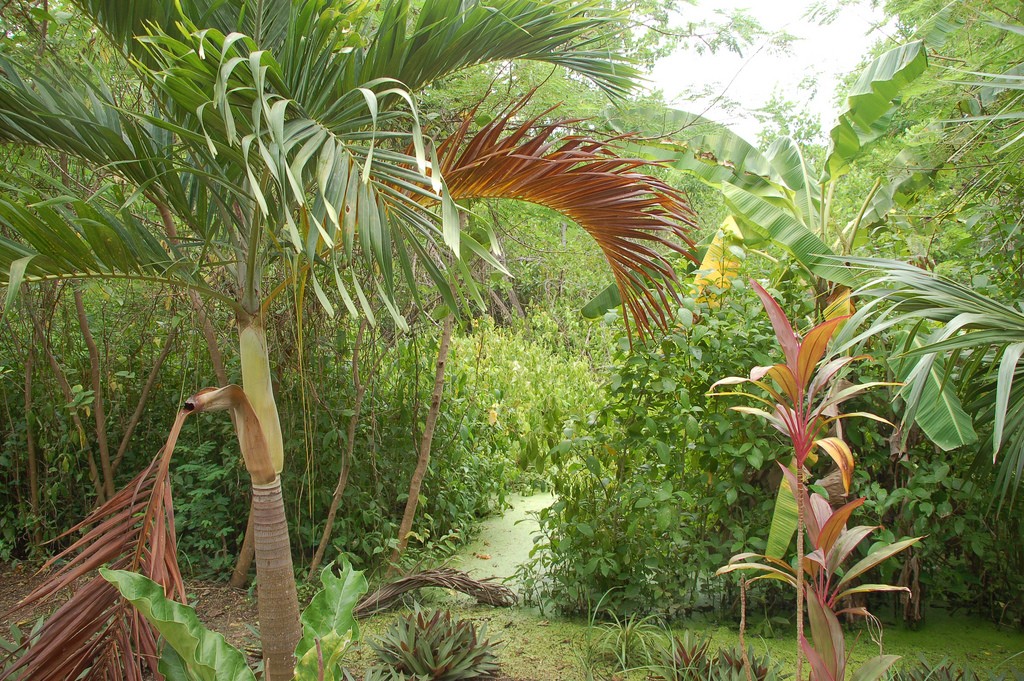 Young activism can make a difference. 113 Mexican children just did! These young activists stopped a $900 million development that would have destroyed a 69-hectare mangrove forest in Cancún.
Young activism can make a difference. 113 Mexican children just did! These young activists stopped a $900 million development that would have destroyed a 69-hectare mangrove forest in Cancún.
Childhood, especially during the teen years, can be a difficult period of transition. From the first time a toddler says, “No!” to getting a driver’s license at 16, children are constantly in flux between dependence and asserting independence. For some children, this act of separation can express itself in negative behavior. For others, this energy comes out in youth activism.
Environmental and social youth activism are effective ways for children to use their energy to bring about change. It lays the groundwork for a life of caring and compassion. It empowers them to create the world they want to inherit.
What is youth activism?
Activists Rights describes an activists as “people who want to create positive and peaceful change”.((http://www.activistrights.org.au/handbook/ch01s02.php)). Not all people that participate in activism consider themselves an activist.
The Encyclopedia of Activism and Social Justice defines activism:
Activism is action on behalf of a cause, action that goes beyond what is conventional or routine…
Activism has played a major role in ending slavery, challenging dictatorships, protecting workers from exploitation, protecting the environment, promoting equality for women, opposing racism, and many other important issues…
Activism is typically undertaken by those with less power, because those with positions of power and influence can usually accomplish their aims using conventional means.((http://www.bmartin.cc/pubs/07Anderson.html))
 Our children by the very nature of childhood often feel like they are in a position less power. Involvement in activism can lessen this feeling. Furthermore, it is our youth that have the energy to bring about the social and environmental change our world needs. The Youth Activism Project explains:
Our children by the very nature of childhood often feel like they are in a position less power. Involvement in activism can lessen this feeling. Furthermore, it is our youth that have the energy to bring about the social and environmental change our world needs. The Youth Activism Project explains:
Nearly half the entire world population is under age 18. Young adults between 10-24 comprise 20% of the U.S. population. Maximum youth involvement is essential to disrupt the status quo and build a smarter, healthier and more peaceful world.((http://youthactivismproject.org))
Children have long lives ahead of them. They are the ones that will be living with the consequences of current decisions, like when forests are destroyed for development.
Youth activism: Mexican kids save 69-hectare mangrove forest in Cancún
If you have ever visited Cancun, you have seen the sprawl of mega high rise hotels, resorts, and high-end shopping malls geared towards wealthy tourists. In contrast to the poverty of Mexico, it is quite sickening.
When a new $900 million development was planned in the region, the local youth responded. Eco Watch explains:
Young environmentalists in Mexico have permanently suspended the development of a 69-hectare project in Cancún that would have cleared a large chunk of a mangrove forest, Quartz reports.
In September, 113 kid activists filed a lawsuit to halt construction of the $900 million project that would have paved over a mangrove-covered area for homes, shops and a promenade.
“If we cut everything down then we’re going to die,” Ana, a four-year-old plaintiff, told Quartz. “Trees help us breathe.”
On Nov. 4, a judge ruled in favor of the group of children, but said they should pay a bond of 21 million pesos (about $1.2 million) to offset the developers’ losses. The group’s attorneys have argued that the bond should not apply to minors.((http://ecowatch.com/2015/11/13/kids-derail-development-cancun/?utm_source=EcoWatch+List&utm_campaign=2055712e89-Top_News_11_22_2015&utm_medium=email&utm_term=0_49c7d43dc9-2055712e89-85357185))
I think it bizarre the judge would rule that the children should have to pay $1.2 million to the developers. I don’t know how the Mexican justice system works, but these children helped not only their local community but the world. It also contradicts the ruling that the collective interests of the children’s future outweighs corporate interests.
Mangrove forests grow in coastal regions. They stabilize coasts and prevent erosion. The Center for People and Forests describes mangrove forests as ” highly productive, biodiversity-rich, inter-tidal forest ecosystems adapted to survive in the harsh interface between land and sea”.((http://www.recoftc.org/project/grassroots-capacity-building-redd/news-and-features/mangroves-more-carbon-rich-and-important-climate-change))
Youth Activism and Climate Change
Mangrove forests are also important in mitigating the causes of climate change. Although the area saved by the Cancun children is only about 170 acres, Mexico is rapidly losing its mangrove forests to tourist development. The country loses 25,000 acres of mangrove forest each year.((http://ecowatch.com/2015/11/13/kids-derail-development-cancun/?utm_source=EcoWatch+List&utm_campaign=2055712e89-Top_News_11_22_2015&utm_medium=email&utm_term=0_49c7d43dc9-2055712e89-85357185))
 The Center for People and Forests explains just how important mangrove forests are as carbon sinks.
The Center for People and Forests explains just how important mangrove forests are as carbon sinks.
The capacity of mangroves, sea grasses, and salt marshes to sequester carbon dioxide from the atmosphere is becoming increasingly recognized at an international level. Of all the biological carbon, also termed as ’green carbon’, captured in the world, over half (55%) is captured by mangroves, sea grasses, salt marshes, and other marine living organisms, which are also known more specifically as ’blue carbon’.
Mangroves, salt marshes, and sea grasses form much of the earth’s blue carbon sinks[2]. These coastal vegetations sequester carbon far more effectively (up to 100 times faster) and more permanently than terrestrial forests. Further, studies have shown that per hectare, mangrove forests store up to five times more carbon than most other tropical forests around the world. This ability of mangroves and other coastal vegetation to store such large amounts of carbon is, in part, due to the deep, organic rich soils in which they thrive. The entangled root systems of mangroves, which anchor the plants into underwater sediment, slow down incoming tidal waters, allowing organic and inorganic material to settle into the sediment surface. The sediments beneath these habitats are characterized by typically low oxygen conditions, slowing down the decay process and rates, resulting in much greater amounts of carbon accumulating in the soil. In fact, mangroves have more carbon in their soil alone than most tropical forests have in all their biomass and soil combined.((http://www.recoftc.org/project/grassroots-capacity-building-redd/news-and-features/mangroves-more-carbon-rich-and-important-climate-change))
Youth activism focused on climate change is a growing. Earlier this year in the United States, plaintiffs ages 8 to 19 sued the federal government over inaction on climate change. MSNBC reported:
The kids argue that inaction on climate change is a violation of their right to life, liberty and property. And they demand that President Obama, seven federal departments and the Environmental Protection Agency act immediately to preserve the climate for “future generations.” ((http://www.msnbc.com/msnbc/future-generations-sue-obama-administration-over-climate-change))
Youth Activism: Collective Rights of Kids over Corporate Interests
I love that children as young as four-year-olds were involved in saving the Cancun mangrove forest. One is never too young to become involved in local and global change. Eco Watch summarizes:
Significantly, this is the first lawsuit filed in Mexico advocating for the collective rights of kids over corporate interests in order to protect the environment, Carla Gil, the group’s lawyer, told Quartz.
Antonella Vazquez, the mother of a 5-year-old plaintiff, told Quartz it’s important for children to raise their voices as hotels and beach resorts spread around Cancún. If her daughter doesn’t speak up, Vazquez says, “there’s going to be nothing left for her.”
Children, teens and young adults around the world are doing more than their fair share for the environment.((http://ecowatch.com/2015/11/13/kids-derail-development-cancun/?utm_source=EcoWatch+List&utm_campaign=2055712e89-Top_News_11_22_2015&utm_medium=email&utm_term=0_49c7d43dc9-2055712e89-85357185))
What is heartening is that legal systems around the world are realizing the collective rights of children are more important than corporate interests. A similar premise was the basis of a US lawsuit filed by youth in August regarding climate change. Another case was won by children in the Netherlands, where the government responded by decreasing emissions.
These “future generations” have a unique ability to use the law to protect our environment. Youth activism is powerful! I am thankful our children are empowered!
Photo credit: dronepicr / Foter.com / CC BY
Photo credit: John Englart (Takver) / Foter.com / CC BY-NC-SA
Leave a Reply